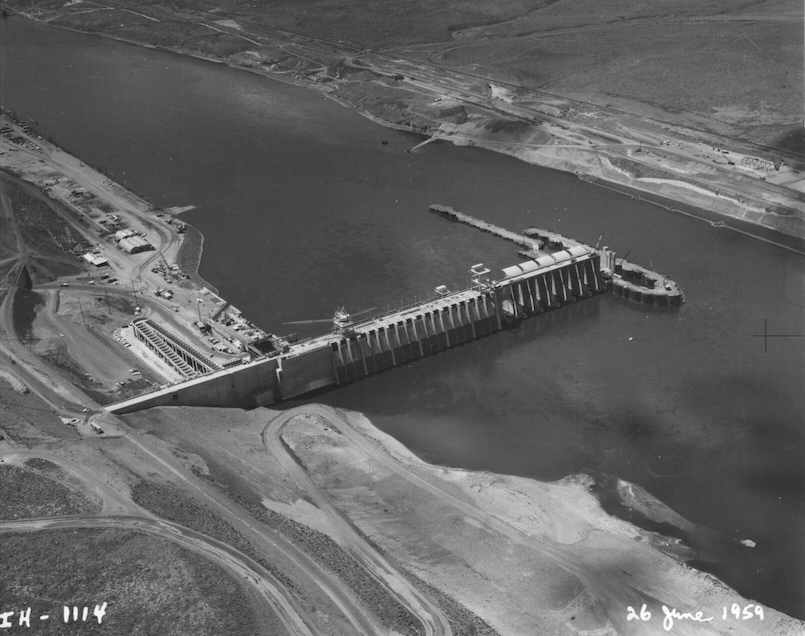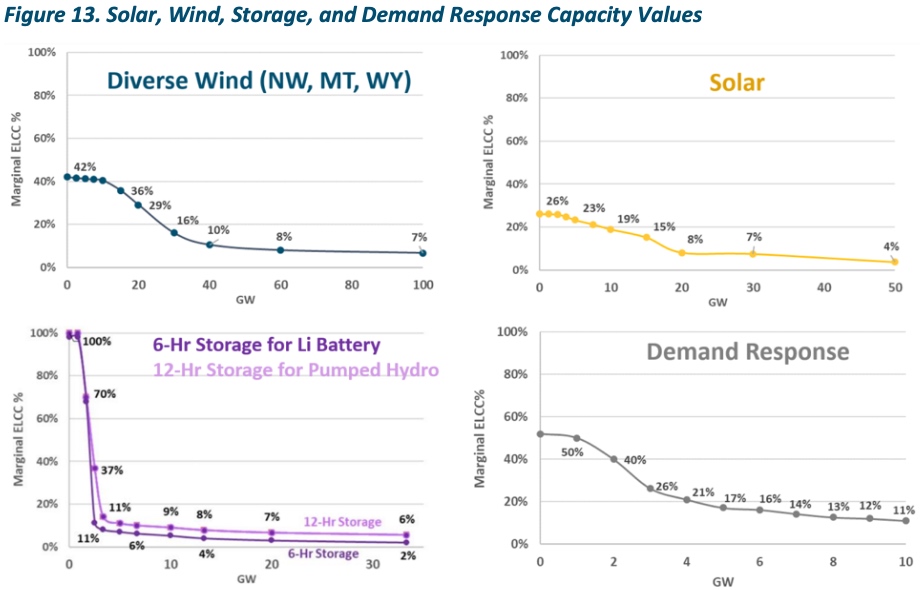forum
library
tutorial
contact

Replacing LSRD Power Could Come
With a Huge Price Tag
by Dan Catchpole
Clearing Up, July 15, 2022
|
the film forum library tutorial contact |

|
Replacing LSRD Power Could Come
by Dan Catchpole
|
The study was conducted in just a few months, and
relies on several rough assumptions and pro-forma calculations,
 Replacing the four lower Snake River dams in the Northwest power grid will cost between $11 billion and just under $20 billion if thermal generation is in the replacement resource mix, according to a study released July 12 by the White House Council on Environmental Quality.
Replacing the four lower Snake River dams in the Northwest power grid will cost between $11 billion and just under $20 billion if thermal generation is in the replacement resource mix, according to a study released July 12 by the White House Council on Environmental Quality.
If only zero-emission resources replace the dams' roughly 3,500 MW capacity and 2,300 MW of firm peaking capability, costs skyrocket to $42 billion to $77 billion.
The report came out alongside a draft report by NOAA that CEQ also commissioned (see story this issue) that said big changes, such as removing some or all of the dams, are needed to restore endangered salmonid species in the river.
"Business as usual will not restore the health and abundance of Pacific Northwest salmon," CEQ Chair Brenda Mallory said at a press briefing. "We need a durable, inclusive and regionally crafted long-term strategy for the management of the Columbia River basin."
Last fall, CEQ launched a federal interagency initiative to better inform and focus policy decisions affecting the Columbia River basin. While the White House handled the study's release, BPA commissioned Energy and Environmental Economics to study the costs of replacing the power from the dams. (>CU No. 2047 [11]).
E3 modeled two scenarios for replacing the power attributes of the four dams -- Ice Harbor, Little Goose, Lower Granite and Lower Monumental. The scenarios run through 2045 and assume the dams are breached in 2032. The study includes three variations for each scenario for a total of six outcomes.
"By 2045, Scenario 1, which requires 100 percent clean retail sales, shows an [approximately] 85 percent decline in carbon emissions relative to 1990 levels," the study states. "Scenario 2 eliminates all carbon emissions by 2045."
The study revolves around three key variables: clean-energy policy mandates, load growth and emerging technology.
In scenario 1, the system must balance clean-energy goals with resource adequacy, resulting in a projected 65 to 85 percent carbon reduction. It uses the load-growth projections of the Northwest Power and Conservation Council 2021 Power Plan and assumes no technological breakthroughs.
Scenario 1's outcomes, including removing the dams as soon as 2024, cost between $12 billion and just under $13 billion, with annual replacement costs ranging from $434 million to $509 million. The replacements would increase power costs for BPA Tier 1 customers by 0.8 cents/kWh, or just under a 10 percent bump based on the current average retail rate of 8.5 cents/kWh in Washington and Oregon.
Each of these outcomes relies on about 2 GW from combined-cycle gas turbines using a mix of natural gas and renewable hydrogen for resource adequacy.
The study was conducted in just a few months, and relies on several rough assumptions and pro-forma calculations, such as using project financing as an input for replacement costs.
Scenario 2, the deep decarbonization scenario, assumes the dams will be replaced by zero-emission resources. E3 modeled three variations: baseline technologies, breakthrough technologies and no new thermal resources.
 The baseline technology version has a diverse portfolio mix: 2 GW of natural gas plus renewable hydrogen, 300 MW of battery storage, 400 MW of wind and 1.2 TWh of hydrogen-fueled generation. This is projected to cost nearly $20 billion, with annual replacement costs reaching $860 million by 2045, and would add an estimated 1.5 cents/kWh to Tier 1 rates, a nearly 20 percent increase.
The baseline technology version has a diverse portfolio mix: 2 GW of natural gas plus renewable hydrogen, 300 MW of battery storage, 400 MW of wind and 1.2 TWh of hydrogen-fueled generation. This is projected to cost nearly $20 billion, with annual replacement costs reaching $860 million by 2045, and would add an estimated 1.5 cents/kWh to Tier 1 rates, a nearly 20 percent increase.
The emerging technology version adds 1.5 GW of dual fuel combustion and 700 MW of small modular reactor resources by 2045, and would cost $11.2 billion with annual replacement costs of about $425 million and a cost increase of 0.7 cents/kWh, an 8 percent increase.
"We're assuming these technologies will be ready when we need them" to replace the dams, Arne Olson, a principal at E3, told Council members during a July 12 presentation on the study's findings. "That might be a heroic assumption -- 2032 is only 10 years away."
The no-new-combustion version adds 10.6 GW of wind and 1.4 GW of solar by 2045 and comes with a price tag of between $42 billion and $77 billion. Annual replacement costs range from $1 billion to $3.2 billion. Public power retail rates would increase by 2.9 cents/kWh to 5.5 cents/kWh, a 34 to 65 percent increase.
A big reason for the gaping range in cost in this scenario is due to unknown transmission costs. It requires a vast buildout of resources, which would need new wires and upgrades to existing ones. E3's model uses a distance cost-adder as a stand-in for transmission investments. If you build more resources, they have to be spread out. The further out they're spread, the higher the costs.
"Transmission is expensive and difficult to site and build," Doug Grob, a Montana member of the NWPCC, said. "That's a problem when you build these big resources that have the ability to provide power but don't provide capacity."
Reactions to the study followed positions groups have already staked on breaching or keeping the dams.
"The science clearly shows there is near-term risk of salmon extinction in the lower Snake River basin, and the risk is rapidly increasing with climate change," NW Energy Coalition Executive Director Nancy Hirsh said in a statement. "E3's energy analysis confirms what several other studies have shown: we can develop a portfolio of clean energy resources that replaces the output of the dams."
The question is how best to replace the dams' power attributes, not whether it can be done, she said. "Decision-makers already have enough information on energy system development for the region to decide that it is time to move forward on [lower Snake River] dam removal and launch a comprehensive energy replacement planning process that will unleash market forces in the development of new, clean energy resources."
Several members of the Northwest's congressional delegation issued a joint press release slamming the two reports CEQ commissioned as skewed.
"Today's release of two reports from the Biden Administration's Council on Environmental Quality . . . confirms what we have suspected for some time -- they are cherry picking points to justify breaching the Lower Snake River Dams, which will permanently and negatively impact our way of life in the Pacific Northwest," said the release signed by Republican Reps. Cathy McMorris Rodgers (Wash.), Dan Newhouse (Wash.), Jaime Herrera Beutler (Wash.), Cliff Bentz (Ore.), Russ Fulcher (Idaho) and Matt Rosendale (Mont.).
learn more on topics covered in the film
see the video
read the script
learn the songs
discussion forum
